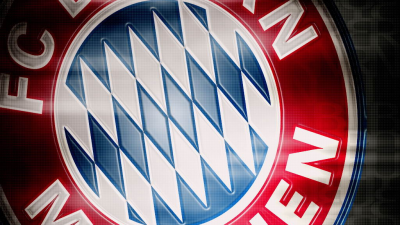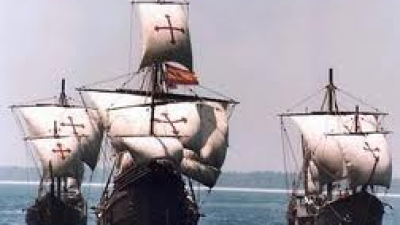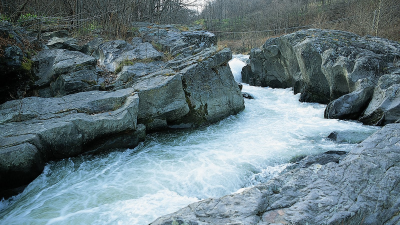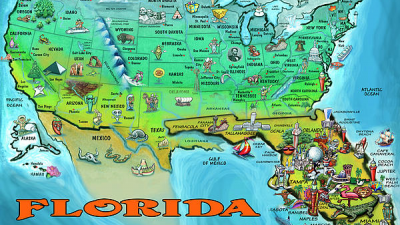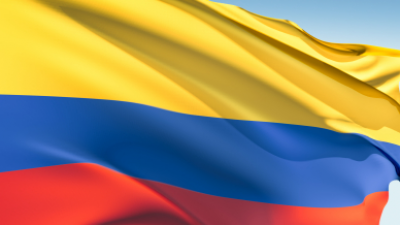The most important battles in history
|
NEWS

Source: listas.20minutos.es
This List is dedicated to the greatest of all: John Lennon, who was against violence and wars!
TOP 69:
Battle of Omdurman
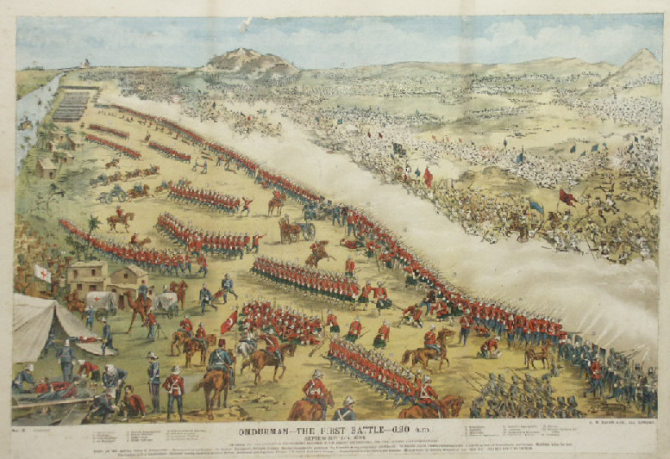
Date: September 2, 1898 Fighters: British Empire and Egypt against Sudan War: Mahdist Rebellion Victory: Anglo-Egyptian Since the death of Charles George Gordon in January 1885 in Khartoum, the dervishes controlled Sudan as a whole. The Mahdi had died, but his successor, Caliph Abdullah, exercised tight control over his country despite the defeats of recent years. He was an ambitious man, who aspired to extend his domain to Abyssinia and even Egypt. In Britain, public opinion demanded revenge for Gordon's death. As a result, the Egyptian army was reinforced and the defense of the Suez Canal and British interests were entrusted to the Royal Navy and British troops in Egypt. In 1895 it was considered time to prepare the reconquest of Sudan from Egypt. The task was entrusted to Horatio Kitchener, Sirdar (Commander in Chief) of the Egyptian army created, instructed and led by the British and comprising excellent battalions recruited among the natives of southern Sudan, men who hated dervishes. Kitchener lacked experience as a commander of troops in combat, but had a great reputation as a military organizer and was determined not to fail.
TOP 68:
Battle of Breitenfeld
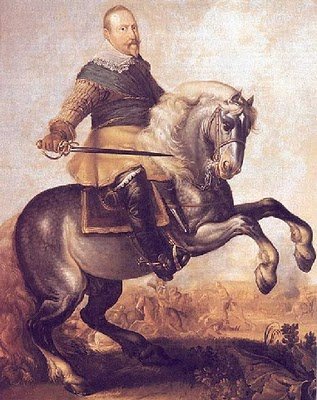
Date: September 17, 1631 Fighters: Sweden against the Holy Roman Empire War: Thirty Years War Victory: Swedish The battle of Breitenfield, which took place on September 17, 1631, was a battle of the Thirty Years War, in which the Protestants defeated. This battle was one of the largest in the war. Johan Tzerclaes, Count of Tilly, wasted more than two thirds of his army, against Gustav II Adolf of Sweden, who suffered only relatively low losses. The victory of the Protestants is attributed mainly to the excessive confidence of Tzerclaes in his veteran imperial army, to the high morale of the Swedish army, and to the superior strategy employed by the Protestants.
TOP 67:
Battle of Arsuf
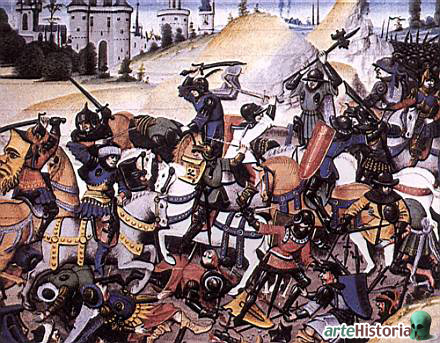
Date: September 7, 1191 Fighters: Crusaders against Ayubies War: Crusades Victory: Crusaders Ricardo Corazon de León wanted to reconquer Jerusalem. From Acre, the least demanding route was the Roman road that bordered the Mediterranean coast and passed through Haifa and Arsuf. The kings of France, Felipe Augusto, and England, Ricardo I, called Corazon de León, and the count of Flanders participated in the Third Crusade, to which Federico I, called Barbarroja, emperor of Germany (who drowned before) to arrive). On July 12, Acre was reconquered after two years of siege, but Saladin was not far away. The coastal road allowed the supply of food to be carried out by sea, since Saladin had eliminated any possibility of land supply.
TOP 66:
Bagdag site
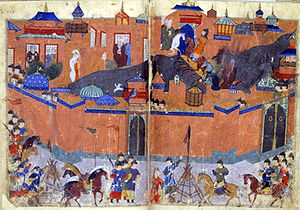
Date: January 29 - February 10, 1258 Fighters: Abasi Caliphate against Mongol Empire War: Mongol invasions Victoria: Mongols The Battle of Baghdad in 1258 was a weapons event that concluded with the victory of the Mongol chief Hulagu Jan, grandson of Genghis Jan and brother of the Mongolian supreme chief Mongke Jan, about the Abbasid Caliphate and culminating in the seizure, looting and fire of Baghdad. The invasion left Bagdag in a state of total destruction and left approximately 1,000,000 civilian deaths.
TOP 65:
Battle of Crécy
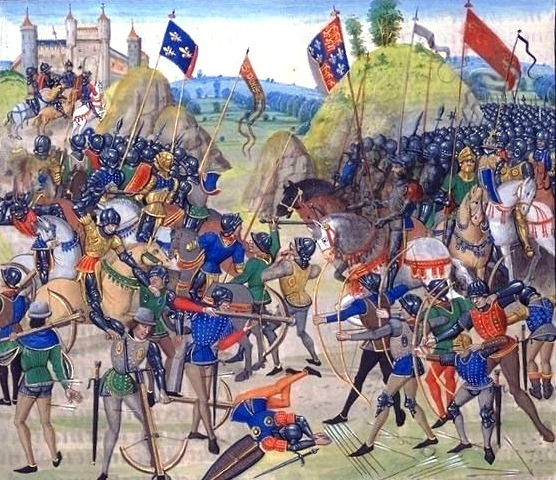
Date: August 26, 1346 Fighters: England vs. France. War: War of 100 years. Victoria: English. The Battle of Crécy took place on August 26, 1346, near Crécy, in northern France, and was one of the most important and decisive battles of the Hundred Years' War. Because of the use of new weapons and tactics, the battle is seen by many historians as the beginning of the end of the cavalry age. In addition, it represents the first of the three great English victories in the protracted conflict.
TOP 64:
Battle of the Pyramids
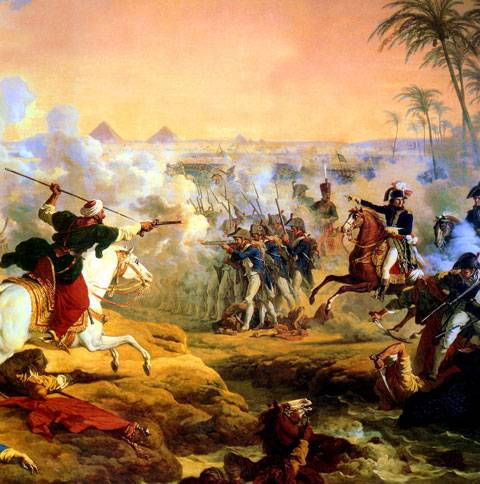
Date: July 21, 1798 Fighters: France vs. Ottoman Empire War: Napoleonic Wars Victory: French The Battle of the Pyramids took place on July 21, 1798 between the French army in Egypt under Napoleon Bonaparte and the local Mamluk forces , and it was the battle where Napoleon used cadre training. In July 1798, Napoleon went to Cairo, after invading and capturing Alexandria. Along the way, two Mamluk forces were found 15 kilometers from the pyramids, and only 6 from Cairo. The Mamluks were commanded by Murad Bey and Ibrahim Bey and had a powerful cavalry. The battle also ended 700 years of Mamluk rule in Egypt.
TOP 63:
Battle of Azincourt
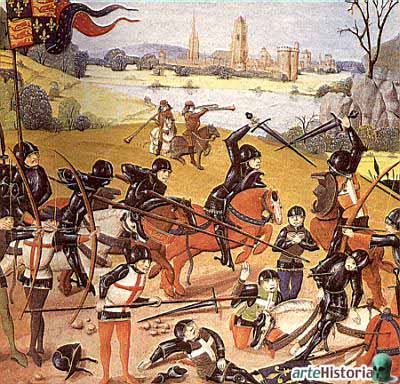
Date: October 25, 1415 Fighters: France vs. England War: 100-year War Victory: French The Battle of Agincourt (or Azincourt) was an unexpected victory that the English forces achieved over French troops in the fall of 1415, in this population of northern France, during the Hundred Years War. Agincourt was a key milestone of that very long conflict, which began a new phase of it, in which the English took over half of France.
TOP 62:
Battle of Qadesh
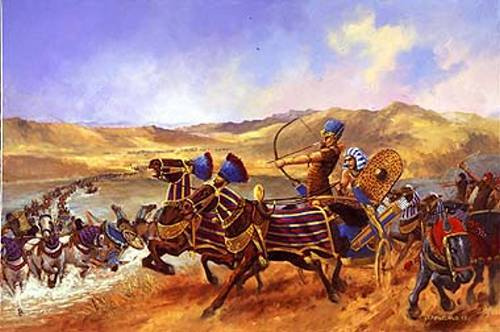
Date: End of May 1274 BC Fighters: Egyptians against Hittites War: The Syrian War Victory: Egyptian In 1274 BC there was one of the first documented fighting in history, the battle of Qadesh, where two clashed powerful armies, that of the young and impetuous Egyptian pharaoh Ramses II, and that of Muwatalli, king of the Hittites, eager both to conquer the city of Qadesh, an important strategic border point. The Hittite force, far superior in number to the Egyptian, would however be defeated in a meeting in which the war chariots had a special role. Destiny fully favored Ramses II, who won a great victory, starting from then on a very long reign that brought Egypt to its maximum splendor.
TOP 61:
Battle of Gallipoli
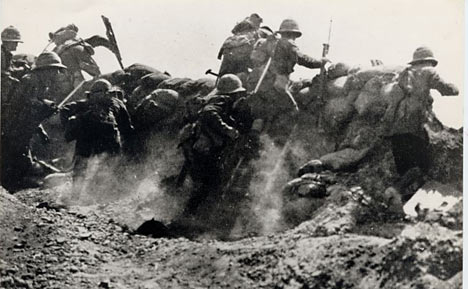
Date: February 19, 1915 - January 9, 1916 Fighters: France and Great Britain against the Ottoman Empire War: First World War Victory: Ottoman The battle of Gallipoli, in 1915, belonging to one of the most ambitious campaigns at the same time controversial of the First World War, it was a resounding allied failure that was paid with thousands of lives, meant a terrible strategic defeat for the British military and destroyed the reputation of its main architects, Churchill and Kitchener. The British army planned and carried out the largest amphibious landing in history so far, causing a total tactical surprise to the Turkish adversaries. But finally the Allied forces when they arrived on the Turkish Mediterranean coast did not have the necessary operability to carry out their mission.
TOP 60:
Battle of Tuyuti
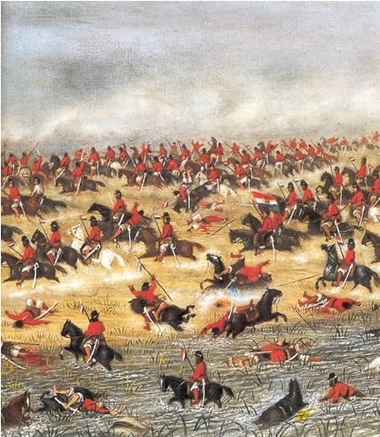
Date: May 24, 1866 Fighters: Argentine Republic, Empire of Brazil and Uruguay against Paraguay War: War of the Triple Alliance Victoria: Argentine Republic, Empire of Brazil and Uruguay The 1st Battle of Tuyutí took place on May 24, 1866 in the surrounding swamps of Lake Tuyutí, in the territory of Paraguay. It is considered by military historians as one of the most important battles of the War of the Triple Alliance (1864-1865), the largest and bloodiest in the history of South America, having confronted troops of the Army of Paraguay and forces of the Triple Alliance.
TOP 59:
Battle of Balaclava
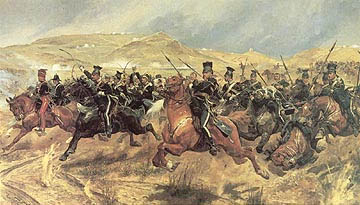
Date: October 25, 1854 Fighters: Russian Empire against British Empire and Second French Empire War: Crimean War Victory: English Victory The Crimean War faced Russia between 1854 and 1856 against a coalition formed by Great Britain, France and the Ottoman Empire. At the beginning of this conflict, the battle of Balaclava took place on October 25, 1854. There would be immortal episodes starring the British cavalry. Some were as glorious as the heroic burden of the heavy brigade under Sir James Scarlett. Others were as dramatic as the famous light brigade charge, which decimated one of the best units of the British cavalry. This terrible tragedy, the result of a misunderstanding of the orders, led to a brave and disciplined unity, composed of 673 men, to an attack not only fateful but suicidal that is now part of the English military legend.
TOP 58:
Acre site
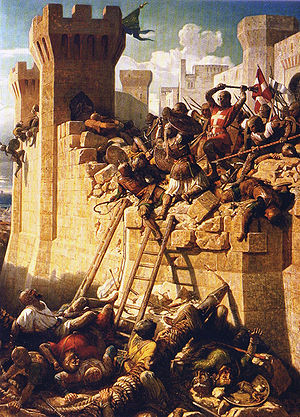
Date: April 6 - May 28, 1291 Fighters: Kingdom of Jerusalem vs. Sultanate Mamluk War: Crusades Victory: Sultanate Mamluk The Fall of Acre, also called the Siege of Acre, took place in 1291 and resulted in the loss of the city of Acre from Christian hands. It is considered one of the most important battles of the period, and is often mentioned by historians as the event that marked the end of the Crusades. When Acre fell, the Crusaders lost their last great strength in the Christian Kingdom of Jerusalem. However, they still kept a fortress under their control, to the north, in the city of Tortosa, and made several coastal incursions as well as an attempt to reconquer from the small island of Arwad, which they later also lost in 1302 at the Site of Arwad. By then, the Crusaders no longer owned land, cities or fortresses in the Holy Land.
TOP 57:
Battle of Kulikovo
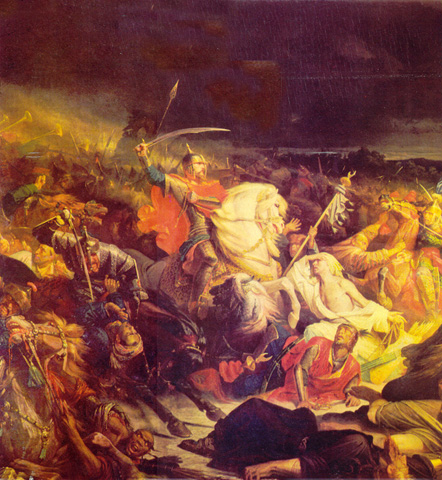
Date: September 8, 1380 Fighters: Russians and Mongols War: Mongol invasion of Russia Victory: Russian The Battle of Kulikovo took place between the Tatars and the Mongols of the Golden Horde against the Russians. It happened on September 8, 1380 on the plain of Kulikovo Polié, next to the Don River and ended with the Russian victory. In the battle, some 50,000 Russians under the command of the great prince of Moscow, Dmitri Donskói, defeated 50,000 to 100,000 Tartars and Mongols under the command of Kan Mamai, annihilating the latter.
TOP 56:
Battle of Montecassino
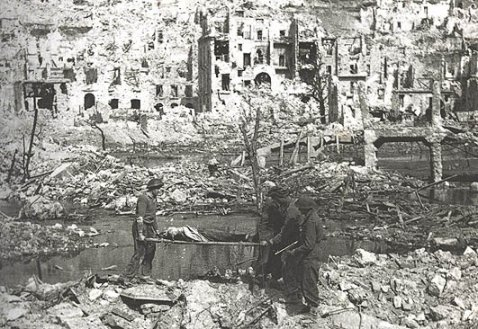
Date: January 4 - May 19, 1944 Fighters: United States, England, Free France, Italy and other allies against Nazi Germany War: World War II Victory: Allied Since the beginning of 1944, the allies put great effort in the conquest of Montecassino, crucial point of the Gustav defensive line, established by the Germans in central Italy. This strategic enclave, on the route from Naples to Rome, was vital for the allies if they wanted to continue their advance from the south of the Italian peninsula to the capital. Up to four battles took place, between January and May, in Cassino and its surroundings. Due to the hardness of the fighting, and fighting among ruins, the battle of Montecassino was called "the Stalingrad of the mountains." Defended at length by German elite units, the city and the medieval monastery of Cassino, nestled on top of a hill, were destroyed by terrible bombings, finally falling to the allies in mid-May.
TOP 55:
Battle of the Nile
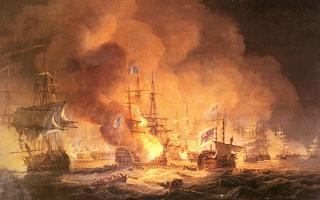
Date: August 1 and 2, 1798 Fighters: Kingdom of Great Britain vs. French Republic War: French Revolutionary Wars Victoria: English The Battle of the Nile, also known as the Battle of the Bay of Aboukir or Battle of Aboukir, was one of the most important naval battles of the French Revolutionary Wars, which faced the Royal English Navy with the French fleet of Vice Admiral François-Paul Brueys D'Aigalliers. This battle took place during the night and first hours of the morning on August 1 and August 2, 1798. The French losses were very high (1,700 dead), including the vice-admiral, and 3,000 prisoners. English losses were much smaller in comparison (218 dead).
TOP 54:
Battle of Tucuman
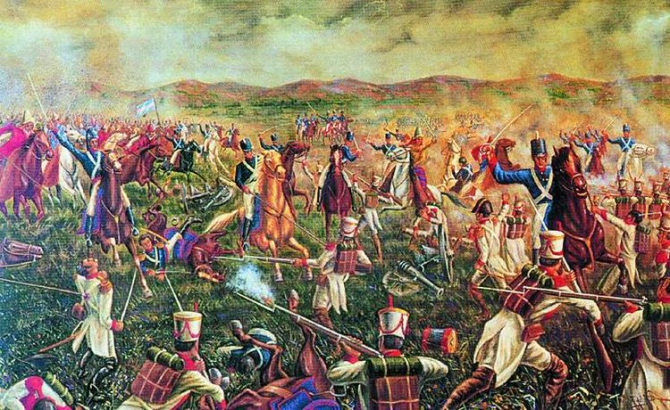
Date: September 24 - September 25, 1812 Fighters: United Provinces of the Rio de la Plata against Spain War: Wars for Hispanic American Independence Victory: Patriot (United Provinces of the Rio de la Plata) The battle of Tucumán was an armed confrontation fought on September 24 and 25, 1812 in the immediate vicinity of the Argentine city of San Miguel de Tucumán, in the course of the Argentine War of Independence. The Army of the North, under the command of General Manuel Belgrano who was seconded by Colonel Eustoquio Díaz Vélez in his capacity as Major General, defeated the royalist troops of General Pío Tristán, who doubled in number, stopping the realistic advance on the Argentine northwest . Along with the battle of Salta, which took place on February 20, 1813, the triumph of Tucumán allowed the Rioplans to confirm the boundaries of the region under their control.
TOP 53:
Battle of Borodino
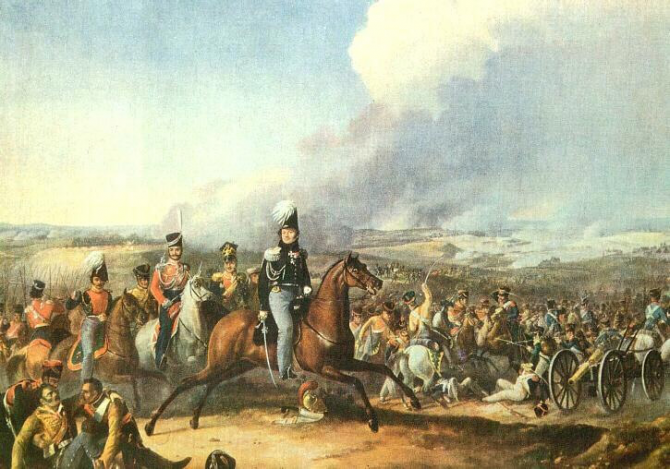
Date: September 7, 1812 Fighters: Russian Empire vs. First French Empire War: French Invasion Russia (Napoleonic Wars) Victory: French The Battle of Borodino took place on September 7, 1812 (August 26 according to the old Russian calendar). It is also known as the Battle of the Moskva River, and it was the biggest and bloodiest battle of all the Napoleonic Wars, facing about a quarter of a million men.
TOP 52:
Battle of the Hattin Horns
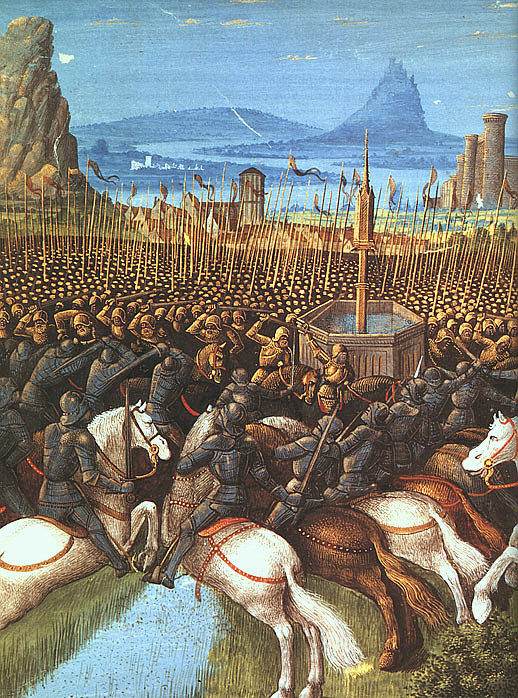
Date: July 4, 1187 Fighters: Ayubies vs. Kingdom of Jerusalem War: The Crusades Victoria: Ayubies The Battle of the Horns of Hattin was an important armed encounter that took place on July 4 of the year 1187 in the Holy Land, west of Sea of Galilee, in the gorge known as Hattin Horns (Qurun-hattun) among the crossed army, formed mainly by Templar and Hospital contingents under Guido de Lusignan, king of Jerusalem, and Reinaldo de Châtillon, against the troops of the Sultan of Egypt, Saladin. Both armies had similar troops, around 17,000 men each.
TOP 51:
Battle of Junin
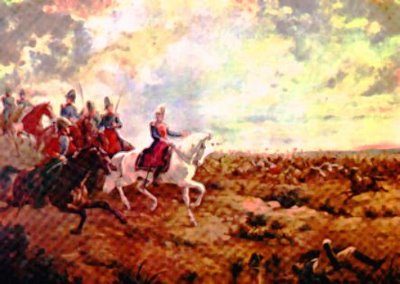
Date: August 6, 1824 Fighters: Peru and Gran Colombia against Spain War: Wars for Hispano-American Independence Victory: Patriot (Peru and Gran Colombia) The battle of Junín, was one of the last clashes that sustained the royalist and independence armies in the process of the independence of Peru. The battle took place in the pampa of Junín in the current department of Junín, on August 6, 1824. Its result was the victory of the independence.
TOP 50:
Battle of Pueblo Viejo
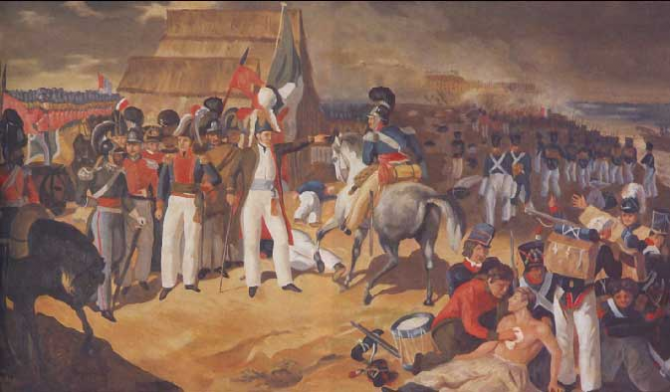
Date: September 10 - September 11, 1829 Fighters: Mexico vs. Spain War: Wars for Hispanic American Independence Victory: Mexican The Battle of Pueblo Viejo took place on September 9, 1829, in the town of Pueblo Viejo, near Tampico , in the state of Tamaulipas, Mexico, between elements of the Mexican Army and Navy of Mexico, under the command of Gen. Antonio López de Santa Anna along with generals Manuel Mier and Terán and Felipe de la Garza against elements of the Spanish army commanded by the Gen. Isidro Barradas trying to recover Mexico for Spain, during the episodes of Attempts of Reconquest in Mexico.
TOP 49:
Battle of Gibraltar
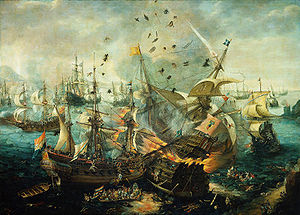
Date: April 25, 1607 Fighters: Spanish Empire vs. United Provinces (Netherlands) War: Eighty-Year War Victory: Dutch The battle of Gibraltar was a naval combat on April 25, 1607 during the Eighty-Year War in the one that a fleet of the United Provinces of the Netherlands surprised and attacked during four hours to the Spanish fleet moored in the bay of Gibraltar. The battle ended with a resounding Dutch victory.
TOP 48:
Carabobo's Battle
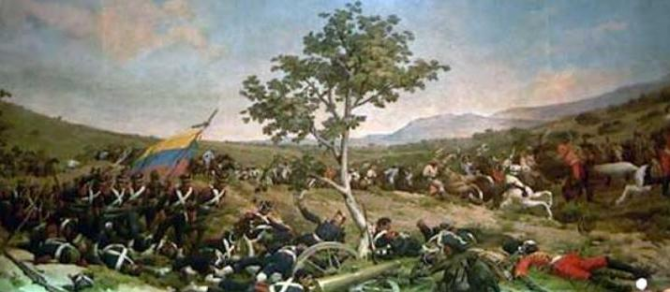
Date: June 24, 1821 Fighters: Gran Colombia vs. Spain War: Wars for Hispanic American Independence Victory: Venezuelan (Gran Colombia) The Battle of Carabobo was a military victory of the Venezuelan independence leaders led by the Creole, Simón Bolívar over the troops of the Kingdom of Spain directed by the Spanish Marshal Miguel de la Torre, which occurred on June 24, 1821 in the Sabo de Carabobo. The battle resulted in a decisive victory for Gran Colombia [3] that proved crucial for the capture of Caracas and the rest of the territory that still remained in the hands of the royals, a fact that will be achieved definitively in 1823 with the Naval Battle of Lake Maracaibo and the capture of Castillo San Felipe de Puerto Cabello
TOP 47:
Battle of Chalons
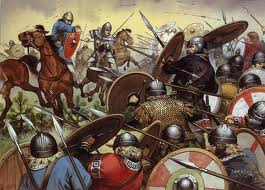
Date: June 20, 451 Fighters: Roman Empire against Huns War: Barbarian Invasions Victory: Partial tactical tie, Roman strategic victory, moral victory of the Huns. Chalons: Hordes of Hungarian barbarians, expelled from Eastern Europe, made bloody incursions in the fourth and fifth centuries by the weakened Western Roman Empire. The desolation after its passage was worth its leader, Attila, the nickname of "The Scourge of God." In 451 the Roman general Aecio, in command of a coalition of barbarian tribes, faced him. This battle, known as the Catalaunian Fields, took place near Troyes, in present-day France. The victorious barbarian tribes would become the germ of the first kingdoms of Western Europe.
TOP 46:
Battle of Gettysburg
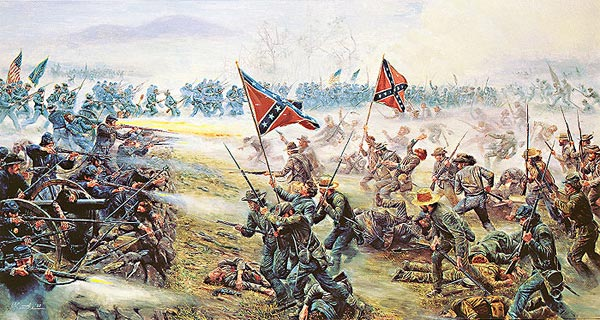
Date: July 1 to 3, 1863 Fighters: United States of America (La Union) vs. Confederate States of America (The Confederacy) War: War of American Secession Victoria: United States of America (La Union) The Battle of Gettysburg (1st as of July 3, 1863) was developed around the town of Gettysburg, Pennsylvania, as part of the Gettysburg campaign, during the American Civil War. It has been the battle that had the lowest casualties in the United States and is often considered, in combination with the Vicksburg site, as the turning point of the American Civil War (1861-1865), marking the beginning of the Union offensive . It was a great victory for the federal Army and a disastrous event for the Confederacy. The Union army was commanded by Major General George G. Meade and the Confederates by the prominent strategist, General Robert E. Lee.
TOP 45:
Battle of Issos
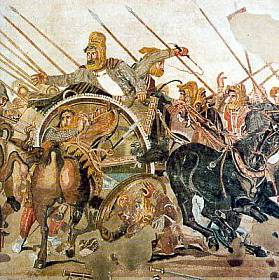
Date: November 333 BC Fighters: Macedonian vs. Persian War: Wars of Alexander the Great Victoria: Macedonia The battle of Issos was an armed encounter between the Macedonian army of Alexander the Great, against the Persian of Darius III Codomano, in 333 BC. C.
TOP 44:
Battle of Rocroi
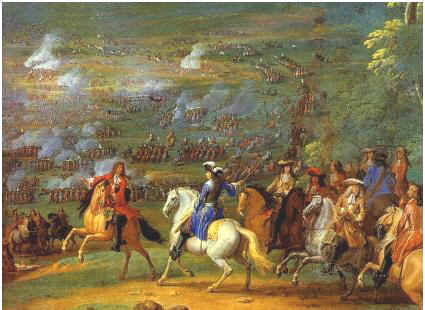
Date: May 19, 1643 Fighters: Spain vs. France War: Thirty Years War Victory: French The Battle of Rocroi or Rocroy took place on May 19, 1643 between the French army under the command of the young Louis II of Bourbon-Condé, at that time Duke of Enghien and later Prince of Condé, and the Spanish army under the orders of the Portuguese Francisco de Melo, Captain General of the thirds of Flanders. The confrontation, which began before dawn, lasted about six hours and ended with the French victory.
TOP 43:
Battle of France
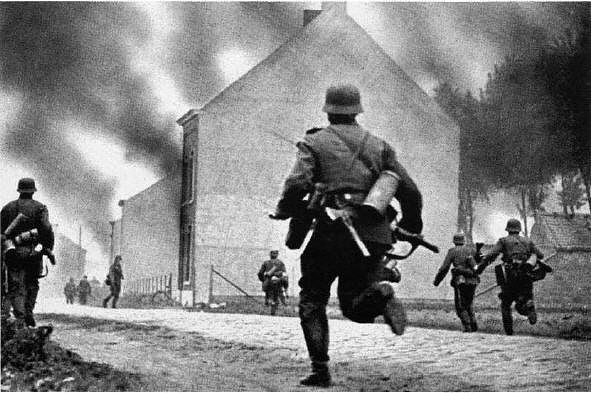
Date: May 10 - June 15, 1940 Fighters: France and England against Nazi Germany War: World War II Victory: German The Battle of France in the framework of World War II, began after the Wehrmacht attack (forces German navies) on the territory of France and the Netherlands on May 10, 1940, and ended with the capitulation of the French government on June 25 of the same year.
TOP 42:
Battle of Gravelinas
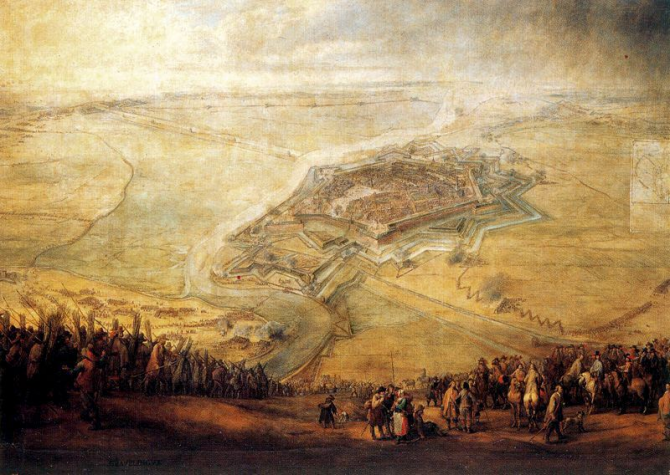
Date: July 13, 1558 Fighters: France vs. Spanish Empire War: Wars for control of Italy Victoria: Spanish The Battle of Gravelinas took place on July 13, 1558, in the town of Gravelinas, near Calais marking the end of the war between France and the Spanish Empire that lasted from 1547 to 1559. After the brilliant performance of Manuel Filiberto de Savoie in the battle of San Quentin, Henry II of France prepared his retaliation. He recruited a new army in Picardy, which he placed in the hands of Nevers; He asked the Ottoman Sultan for naval help and encouraged the Scots to invade England from the north. The Duke of Guise snatched the port of Calais from the English, and the lord of Termes invaded with another Flanders army, across the coast, reaching Dunkirk and threatening Brussels.
TOP 41:
Sedan Battle
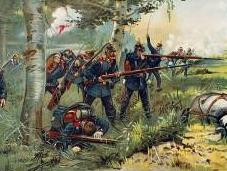
Date: September 1, 1870 Fighters: Prussia against the Second French Empire War: Franco-Prussian War Victory: Prussian The Battle of Sedan was fought on September 1, 1870, during the Franco-Prussian War. The result was the capture of Emperor Napoleon III along with his army and decided in practice the war in favor of Prussia and his allies, although the struggle continued under a new French government. End of the II French Empire and unification of Germany.
TOP 40:
Battle of Austerlitz
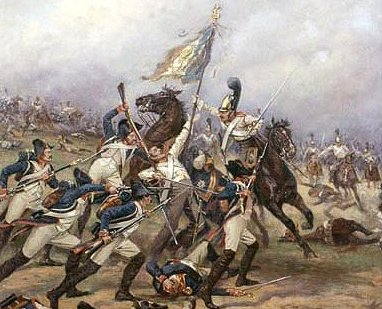
Date: December 2, 1805 Fighters: Russian and Austrian Empire against First French Empire War: Napoleonic Wars Victory: French On December 2, 1805 the battle of Austerlitz, also known as "of the three emperors", took place between the forces of Napoleon and those of a coalition formed by Great Britain and the Austrian and Russian empires. Despite allied numerical superiority, Napoleon won a total victory in Austerlitz that revealed his military genius to the world. This battle, which was fought at the time and place chosen by him, represents an impressive example of the art of turning an apparent defense into a devastating attack. After Austerlitz, Napoleon became the master of Europe, and the Napoleonic "Grande Armée" earned a reputation as the most effective military force of his time.
TOP 39:
Battle of Iwo Jima
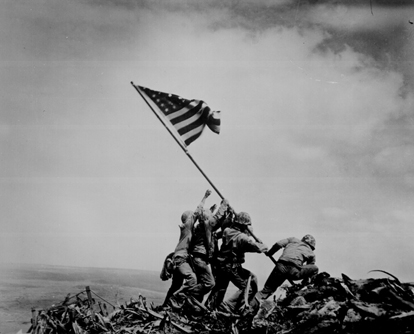
Date: February 16 - March 26, 1945 Fighters: United States vs. Japanese Empire War: World War II Victory: American Near the end of World War II, between the months of February and March 1945, a bloody battle took place for the dominance of the island of Iwo Jima, of great strategic value for the United States that intended to establish a support base there so that its airplanes could bomb targets inside Japan. US Marine Corps troops fought a fierce fight with the Japanese defending it, which resulted in the American victory, when their Marines were able to fly the victory flag on the summit of Mount Suribachi.
TOP 38:
Battle of Actium
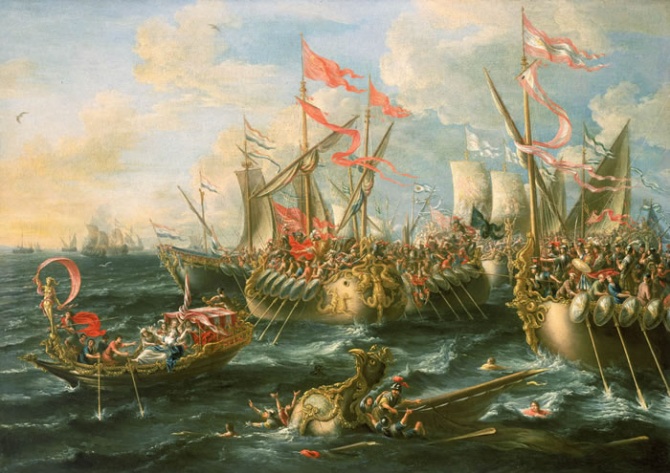
Date: September 2, 31 BC Fighters: The Rome of Octavio against the Rome of Marco Antonio and Egypt of Cleopatra War: Roman Civil War Victoria: The Rome of Octavio, unification of the Roman Empire. The Actium Naval Battle took place on September 2 of the year 31 a. C., between the fleets of Cayo Julio César Octaviano, directed by Agripa, and that of Marco Antonio and his ally Cleopatra, facing the Gulf of Ambracia and the promontory of Actium (Accio). The battle resulted in the absolute victory of Augustus with 2,500 casualties and the flight of Antonio and Cleopatra, leaving more than 5,000 dead.
TOP 37:
Battle of Castillon
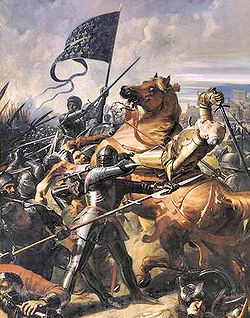
Date: July 17, 1453 Fighters: England vs. France War: 100 Years 'War Victory: French The Battle of Castillon, fought on July 17, 1453, was the last battle of the Hundred Years' War. In it the English armies clashed on the one hand and Franco-Breton on the opposite. It was also the first documented battle in which artillery proved to be the deciding factor.
TOP 36:
Battle of Maipu
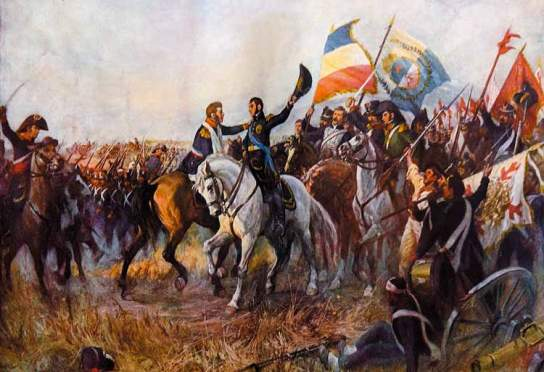
Date: April 5, 1818 Fighters: United Provinces of the Rio de la Plata and Chile against Spain War: Wars for Hispanic American Independence Victory: Patriot (United Pronvinces of the Rio de la Plata The Battle of Maipú was an armed confrontation that took place on April 5, 1818, in the Maipo Valley, near Santiago de Chile, between the Argentine-Chilean patriotic forces and the royalists, which largely decided on the Independence of Chile. They faced the realistic army (of 5,300 men [ 2] and twelve pieces of artillery), under the orders of Mariano Osorio, against the army of the Andes (4,900 men and 21 pieces of artillery) [3], under the command of the Argentine general José de San Martín. south of Santiago de Chile approximately 10km away, on the plains of the Maipo River, there San Martín organized his army in an elevated position waiting for the Spanish attack, which was placed almost face to face in a pos elevated position in the same way as the patriotic position.
TOP 35:
Second Battle of El Alamein
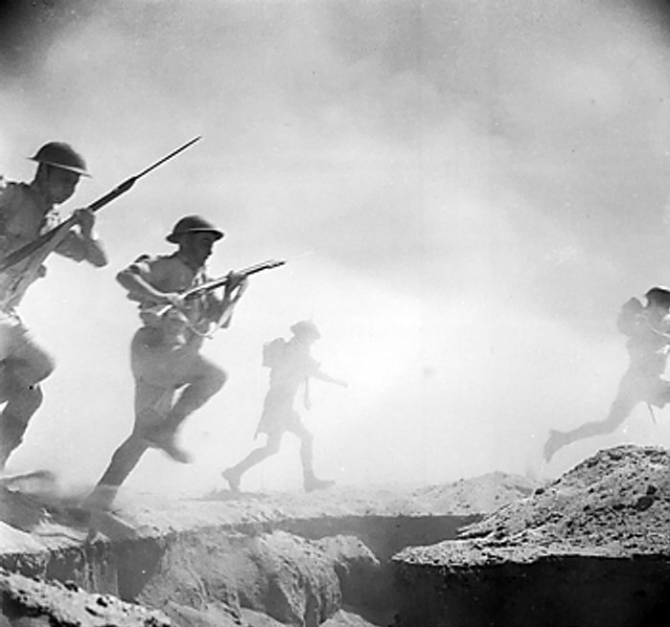
Date: October 23 - November 3, 1942 Fighters: Great Britain and Free France against Nazi Germany and Italy War: Second World War Victory: Allied (England, Free France, etc.) The Second Battle of El Alamein was the turning point of the war in North Africa, during World War II. The battle was the continuation of the First Battle of El Alamein, which had halted the advance of Afrika Korps forces. General Bernard Montgomery had taken command of the VIII British Army, displacing Claude Auchinleck in August 1942.
TOP 34:
Battle of Verdun
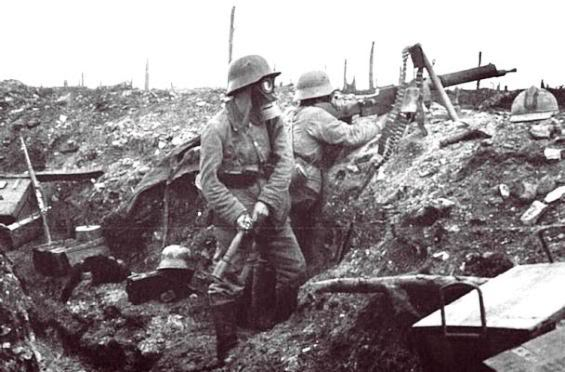
Date: February 21 - December 19, 1916 Fighters: France vs. German Empire War: First World War Victory: French The battle of Verdun, which lasted from February to December 1916, was the longest of the First World War, and next to that of the Somme, the bloodiest. Faced with the stagnation situation involved in trench warfare, the Germans launched a terrible offensive, first of artillery and then infantry, against Verdun, one of the most important and symbolic fortresses in France, with the intention of bleeding the French army and undermine the spirits of the entire gala population. It would become a direct confrontation between German general Falkenhayn and French general Pétain. But despite the enormous human losses, accounted for in more than 250,000 dead and half a million wounded, the battle was hardly any territorial advance for either side.
TOP 33:
Battle of Zama
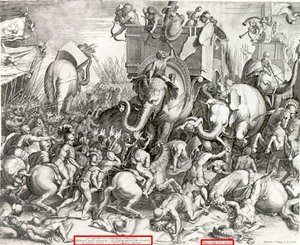
Date: October 19, 202 BC Fighters: Roman Republic vs. Carthaginian Republic War: Second Punic War Victory: Roman The Battle of Zama, October 19, 202 BC. C., represented the outcome of the Second Punic War. In it the Carthaginian general Aníbal Barca and the young Publio Cornelio Escipión, "el Africano Mayor", met in the plains of Zama.
TOP 32:
Battle of Ayacucho
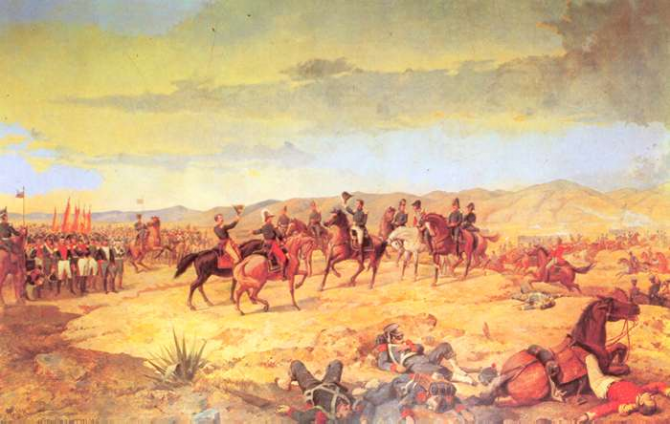
Date: December 9, 1824 Fighters: Peru, Gran Colombia, United Provinces of the Rio de la Plata, Bolivia and Chile against Spain War: Wars for Hispano-American Independence Victory: Patriot (Peru, Gran Colombia, United Provinces of the Rio de la Plata and Chile) The battle of Ayacucho was the last major confrontation within the land campaigns of the Spanish-American wars of independence (1809-1826) and signifies the definitive end of Spanish colonial rule in South America. The battle took place in the pampa of Quinoa in the Department of Ayacucho, Peru, on December 9, 1824. The victory of the independentists means the disappearance of the most important realistic military contingent that was still standing; sealing the independence of Peru with a military capitulation that ended the viceroyalty of Peru. The independence of Peru was finally recognized by Spain through a treaty signed in Paris on August 14, 1879.
TOP 31:
Battle of Cannas
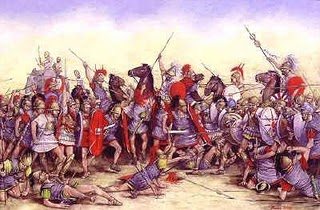
Date: August 2, 216 BC Fighters: Roman Republic against Carthaginian Republic War: Second Punic War Victoria: Carthaginian Cannas: In the year 216 BC, the powerful Roman legions faced, in the Italian town of Cannas, the Carthaginian army of Hannibal . The 70,000 Romans doubled the soldiers of Carthage, but the Carthaginian leader devised a strategy that finally gave him the victory, resulting in the Roman army completely shattered. Everyone thought then that Hannibal would attack Rome, but finally he did not. Rome was completely replenished, and not only persecuted Hannibal until his death, but razed the city of Carthage to its foundations.
TOP 30:
Battle of Pavia
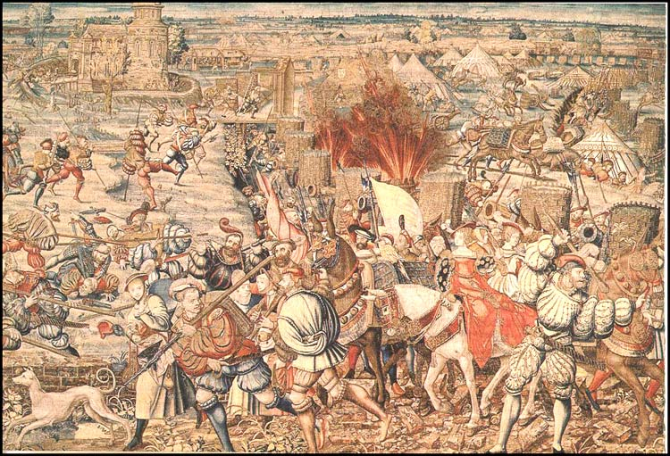
Date: February 24, 1525 Fighters: Spain vs. France War: Italian War of 1521 Victory: Spanish The battle of Pavia was a battle held on February 24, 1525 between French troops under King Francisco I and the Spanish emperor troops Carlos V, with victory of the latter, in the vicinity of the Italian city of Pavia. This battle ended with the fall as a prisoner of Francisco I of France.
TOP 29:
Battle of Platea
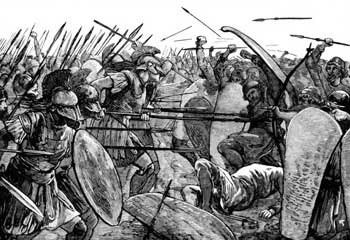
Date: August 27, 479 BC Fighters: Greeks vs. Persians War: Third Medical War Victory: Greek The Battle of Platea took place on August 27, 479 BC. C. when facing the Persian and Greek armies during eight days in the borders of the Asopo river in the surroundings of Platea and in the skirts of the mount Citerón. This battle belongs to what is known as the Second Medical War between Persians and Greeks. In it died General Mardonio commander of the Persian army and the Spartan general Pausanias covered himself with glory with the triumph of his army.
TOP 28:
Battle of Tanneberg
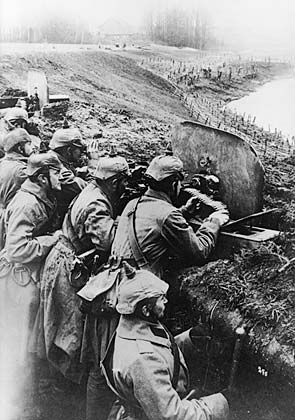
Date: August 17-September 2, 1914 Fighters: Russian Empire vs. German Empire War: First World War Victory: German At the end of August 1914, in Tannenberg, in present-day Poland, one of the most momentous battles of World War I between Germany and Russia. The fate of the entire eastern front would be decided in this small town, where the German General Paul von Hindenburg clashed with the Grand Duke Nicholas, uncle of Tsar Nicholas II. The eighth German army had less than 250,000 men, while the grand duke had two armies that in total totaled 500,000 soldiers, but the rivalry and lack of support among the generals who commanded each of the Russian armies would be decisive causes of Your defeat Tannenberg meant a tremendous psychological blow to Tsarist Russia, from which he never recovered, leading shortly after the Bolshevik Revolution of 1917.
TOP 27:
Battle of Hastings
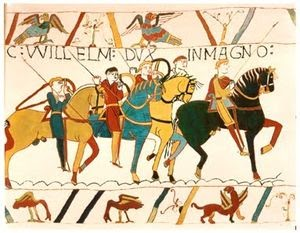
Date: October 14, 1066 Fighters: Kingdom of England vs. Duchy of Normandy War: War of Succession of England 1066 Victory: Duchy of Normandy The Battle of Hastings was a decisive confrontation between the troops of Harold II, last Saxon king of England , and the Norman invaders of the future William I of England. It was decided on October 14, 1066 in Hastings, near London, and ended with William's overwhelming victory. Harold II died in battle and with him the Saxon rule over England, which thereafter was politically linked to the Duchy of Normandy, in northern France. The disputes surrounding the government of the latter territory would be the ultimate cause of the Hundred Years' War between the crowns of France and England.
TOP 26:
Battle of Saratoga
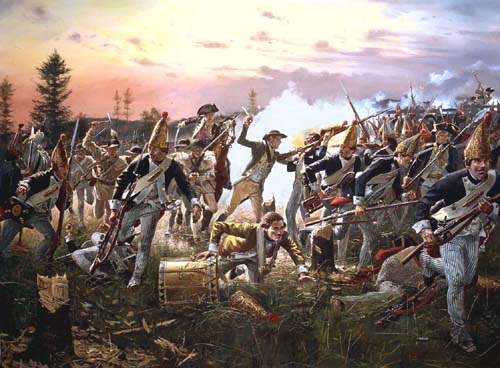
Date: September 19 - October 17, 1777 Fighters: United States vs. Great Britain War: War for American Independence Victory: American The battle of Saratoga was one of the most important clashes fought during the course of the War of Independence of the U.S. Its outcome, to a large extent, helped decide the final outcome of the contest in favor of the continental army. This battle took place between September 19 and October 7, 1777 in Saratoga, a region located between Boston and the Great Lakes area, near the Hudson River. The British general John Burgoyne tried to position his troops in the area, isolate New England from the rest of the northern colonies and cause as many casualties as possible among the ranks of the rebel army.
TOP 25:
Battle of the Dnieper
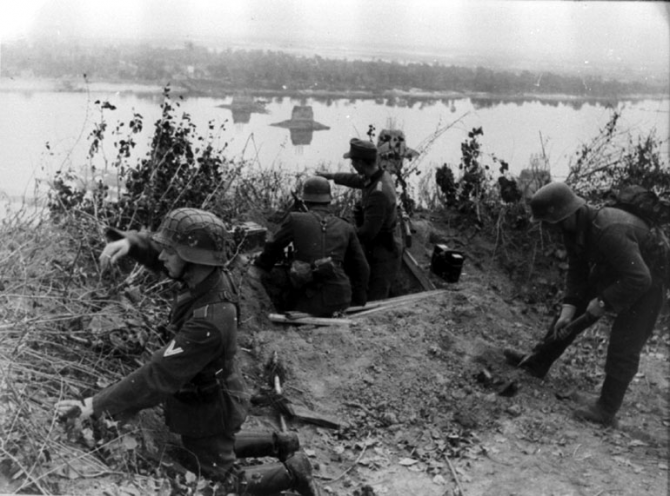
Date: August 24 - December 23, 1943 Fighters: Soviet Union against Nazi Germany War: World War II Victory: Soviet The battle of the Dnieper (August 24, 1943 - December 23, 1943) is a battle of the Second War World, considered one of the most gigantic battles in the history of mankind, mobilizing up to four million soldiers by both belligerents and spreading over a 1,400 kilometer front. During this four-month campaign, the south bank of the Dnieper was freed from the German military presence by Soviet forces, which crossed the river and created several bridgeheads over its north bank, freeing Kiev, then in the hands of the Germans since the summer of 1941. It is considered one of the bloodiest battles, with estimated losses between 1,700,000 and 2,700,000 soldiers from both sides.
TOP 24:
Battle of the Invincible Navy
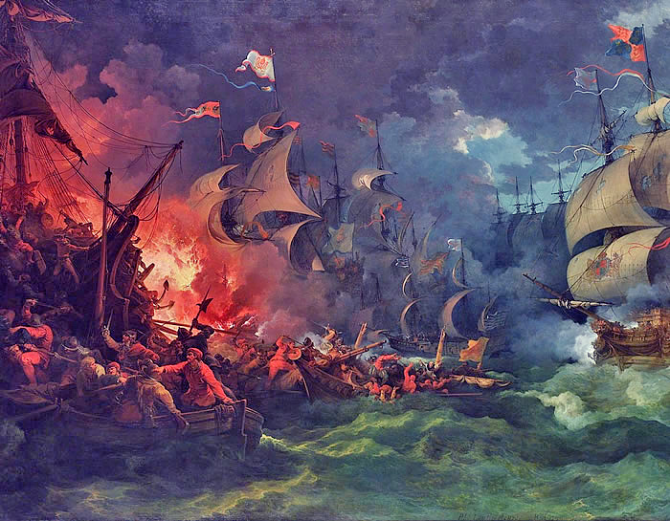
Date: August 8, 1588 Fighters: England vs. Spanish Empire War: Anglo-Spanish War Victory: English In the summer of 1588, King Philip II of Spain sent the famous Invincible Armada, the largest fleet ever built, to invade the Elizabeth I. England Against this powerful navy were the English sailors, under Drake, with their fast warships and superior navigation techniques. Problems of all kinds, of organization, military, naval and, above all, the terrible storms that had occurred in that summer of 1588, thwarted the plans of Felipe II, turning the Spanish expedition into a real disaster.
TOP 23:
Battle of the Somme
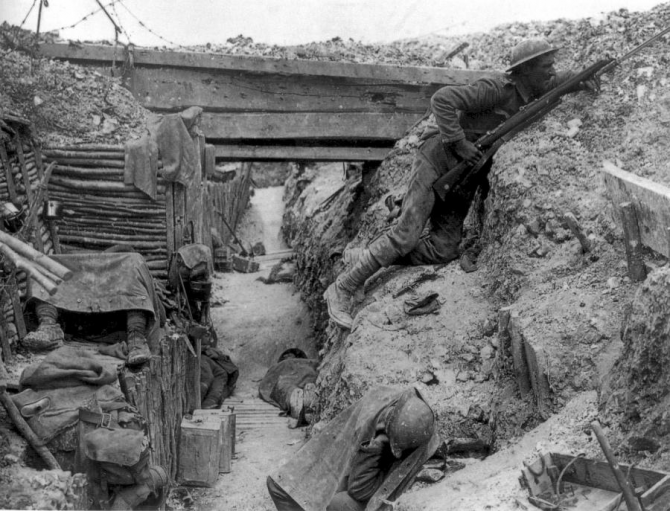
Date: July 1 - November 18, 1916 Fighters: France and England against the German Empire War: World War I Victory: Tie both tactical and strategic During World War I, while the battle of Verdun was still taking place, in which the Allied forces were literally crushed by the Germans, the battle of the Somme was set in motion, which would represent a new tragic episode for British military history. In that battle, which began on July 1, 1916, Lord Kitchener's army of volunteers was brutally massacred. Only on the first day of the battle, which would last several months in different phases, more than 60,000 British lives were lost, especially due to the lousy strategy and unforgivable mistakes of General Haig and his staff. For all this the battle of the Somme is forever one of the blackest chapters of the trench warfare.
TOP 22:
Battle of Trafalgar
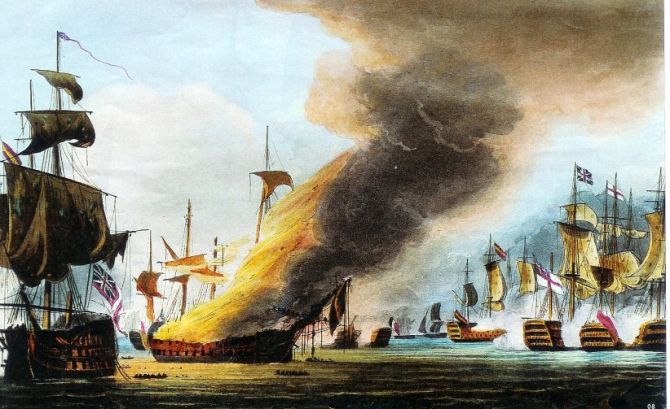
Date: October 21, 1805 Fighters: United Kingdom vs. First French Empire War: Napoleonic Wars Victory: English This naval battle, which occurred on October 21, 1805 against the end of the same name on the Cadiz coast, faced Great Britain with the Napoleonic France and its ally, Spain. The Franco-Spanish army, commanded by Admirals Villeneuve and Gravina, was composed of thirty-three ships and seven frigates. For its part, the British Navy, commanded by Admiral Nelson, consisted of twenty-seven ships and six frigates. In spite of the slight allied superiority in number of ships, the greater naval and military experience of the British decided the victory in their favor, which meant the end of the French naval dominance in the Atlantic and in the Mediterranean, which passed to British hands during the next century.
TOP 21:
Battle of Salamis
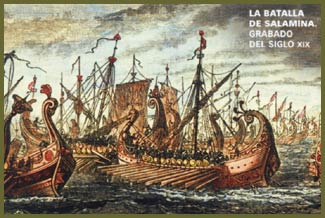
Date: September 23, 480 BC Fighters: Athenians and Spartans against Persians War: Second Medical War Victory: Athenian-Spartan The battle of Salamis was a naval combat that took place in 480 BC. C. and that is part of what is known as the Second Medical War between the Persians and the Greeks. It took place in the Saronic Gulf, precisely at the bottom of the gulf where the island of Salamis leaves two narrow channels that give access to the Bay of Eleusis. The Greek fleet was located in the eastern channel, a channel that in its southern access is obstructed by the small island of Psitalea that leaves two small steps.
TOP 20:
Battle of Marathon
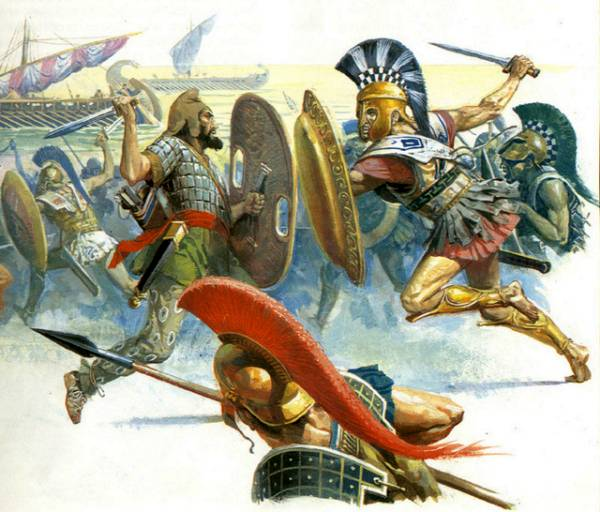
Date: September 490 BC Fighters: Greeks vs. Persians War: First Medical War Victory: Greek Marathon: It was 490 BC and, until then, no Greek army had defeated the Persians. Before the news that Dario had sent his troops to punish the Athenians, they commissioned the defense of Miltiades, who faced the enemy in Marathon, a plain on the east coast of Greece. The defeat of the Persians commanded by Datis was notified to the Athenians by Philippi, a messenger who ran the distance that separated the battlefield from the city, about 42 km.
TOP 19:
Battle of Leipzig: "Considered by historians as the most important and decisive battle of the Napoleonic wars"
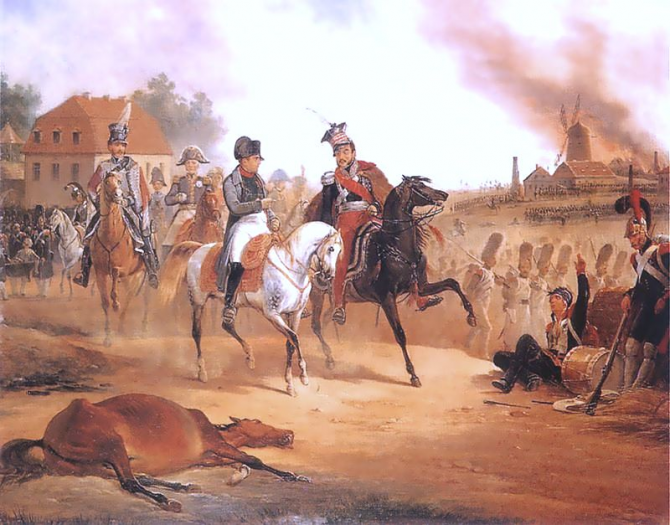
Date: October 16-19, 1813 Fighters: Sixth Coalition and First French Empire War: Napoleonic Wars Victoria: Sixth coalition The Battle of Leipzig (October 16-19, 1813), also called the "Battle of the Nations", was the greatest armed confrontation of all the Napoleonic Wars and the most important defeat suffered by Napoleon Bonaparte. After the disastrous campaign in Russia and the defeats in the Spanish War of Independence, the anti-French forces had cautiously regrouped in the Sixth Coalition, which included the United Kingdom, Russia, Spain, Portugal, Prussia, Austria, Sweden and certain German small states. With all these countries, the Sixth Coalition could put more than half a million men on the battlefield (and certainly, during the battle of Leipzig, the Allied forces east of the Rhine would probably exceed one million soldiers). In contrast, Napoleon's forces were limited to a few hundred thousand.
TOP 18:
Battle of Berlin
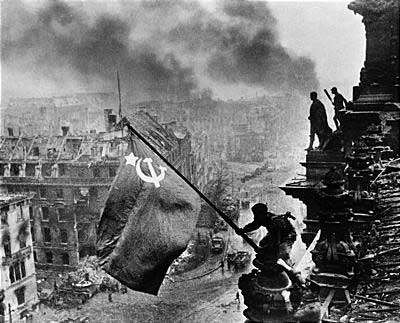
Date: April 16 - May 2, 1945 Fighters: Soviet Union and Poland against Nazi Germany War: Second World War Victory: Soviet and Polish The fall of Berlin on May 2, 1945, meant the last and crucial chapter of the World War II in Europe. The determined but desperate last Nazi troops, under the splint of a Hitler on the verge of madness, faced the unstoppable and relentless Soviet army, commanded by Marshals Zhukov and Koniev. The battle for the German capital reached heroic and dramatic limits, as shortly before in Stalingrad, with the taking of the city street by street and house by house. With the conquest of Berlin, the Soviet leader Stalin secured the dominance of all of Eastern Europe.
TOP 17:
Battle of Thermopylae
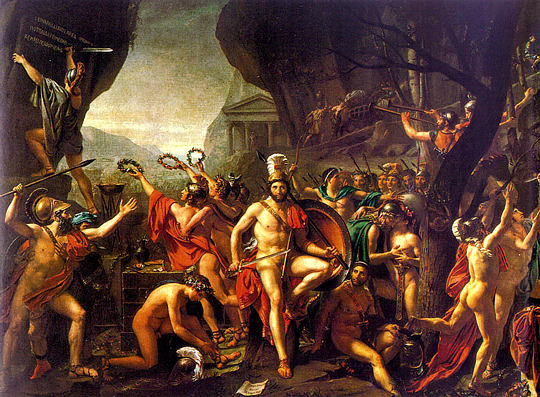
Date: Between August and September 480 BC Fighters: Spartans against Persians War: Second Medical War Victory: Persian Thermopylae: During the second of the Medical Wars between Greeks and Persians, the narrow passage of Thermopylae was the scene of an epic struggle between King Leonidas and his famous three hundred Spartan soldiers, supported by another thousand Greeks, against the invading troops of Emperor Xerxes I. Although the Greeks were overcome in a proportion of one to one hundred, they endured the Persian attacks for two days, preferring to die in the end. fight before giving up.
TOP 16:
Battle of Gaugamela
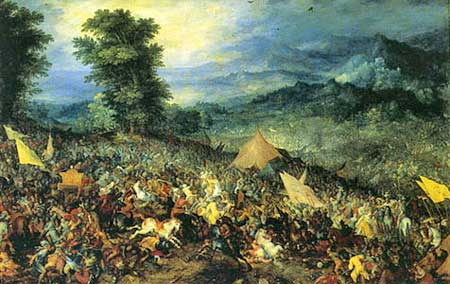
Date: October 1, 331 BC Fighters: Macedonian vs. Persian War: Alexander the Great War Victoria: Macedonia Alexander the Great was the greatest conqueror of all time, thanks to great war victories like Gaugamela's, from 331 BC. Faced with the Persian emperor Darius III, and an army five times higher than his own, Alexander's military genius shone like never before in this battle. He and his fellow Macedonians, members of the best cavalry unit of the time, defeated the Persians despite having carts whose wheels protruded long and sharp blades that cut off the legs of the horses and the legs of the enemy soldiers . The victory he won in Gaugamela made Alexander the owner and lord of the greatest empire ever known, and his early death would make him a legendary figure.
TOP 15:
Battle of Lepanto
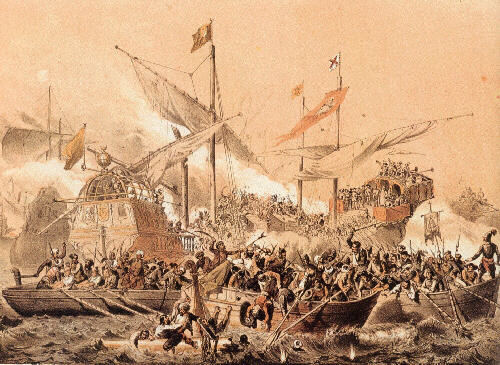
Date: October 7, 1571 Fighters: Spanish Empire vs. Ottoman Empire War: Ottoman Invasion to Europe Victory: Spanish The battle of Lepanto, "the highest occasion ever seen", [1] was a naval battle of capital importance that It took place on October 7, 1571 in the Gulf of Lepanto, in front of the city of Naupacto (misnamed Lepanto), located between the Peloponnese and Epirus, in mainland Greece. Ottoman Turks clashed against it against a Christian coalition, called the Holy League, formed by Spain, Venice, Genoa and the Papal States. The Christians were victorious, saving only 30 Turkish galleys. Thus the Turkish expansionism was stopped by the western Mediterranean. Miguel de Cervantes participated in this battle, who was injured, suffering the loss of mobility of his left hand, which earned him the nickname "Manco de Lepanto".
TOP 14:
Battle of the Ardennes
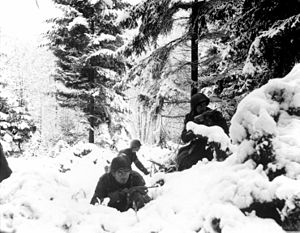
Date: December 16, 1944 - January 25, 1945 Fighters: United States, France, England, Holland, Canada and Belgium against Nazi Germany War: World War II Victory: Allied After the Normandy landing of June 1944, it seemed that the allies were going to sweep the German armies beyond their borders. But Hitler devised an offensive that, according to him, would mean the end of the war in Europe and the triumph of Nazi Germany. He secretly moved important forces to the onynesian region of the Ardennes, starting from there a powerful offensive that, at first, almost achieved its purpose. The allies, however, recovered from the initial surprise and arranged a great counteroffensive. The battle of the Ardennes, which took place in the months of December 1944 and January 1945, was the swan song of the German forces in Western Europe, and the beginning of the end of Hitler's Germany.
TOP 13:
Battle of Midway
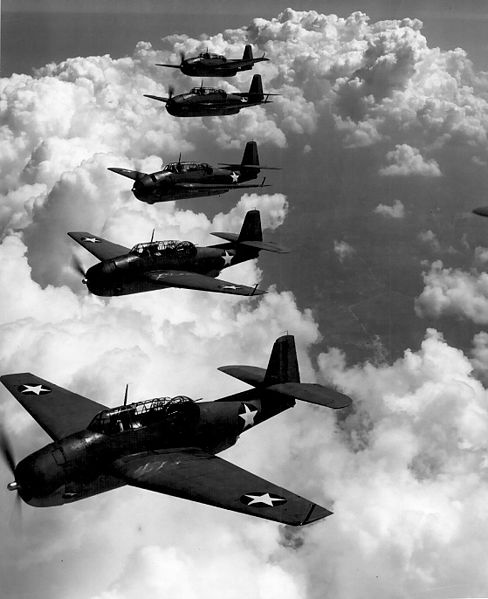
Date: June 4 to June 7, 1942 Fighters: United States vs. Japanese Empire War: World War II Victory: American One of the most important air battles of World War II took place along Midway Island in June of 1942, and became the turning point of the war in the Pacific. Not only did he stop the hitherto unstoppable military advance, but he also allowed the Americans to go on the offensive, which they would no longer leave until the end of the war against Japan. The main protagonists of the battle of Midway were the Japanese admiral Isoroku Yamamoto and the American admiral Chester Nimitz, and his decisive aircraft confrontation made clear the importance of aircraft carriers and aircraft as decisive weapons of modern war at sea.
TOP 12:
Battle of Adrianopolis
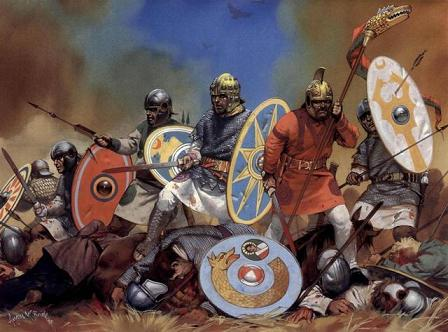
Date: August 9, 378 Fighters: Roman Empire against Visigoths War: Barbarian Invasions Victoria: Visigoth. The Battle of Adrianópolis was an armed confrontation that was fought on August 9, 378 AD. C. in the plains to the northwest of the Roman city of Adrianópolis. In it the forces of Fritigerno, head of the Visigoths, and the army of the Roman Empire of the East were commanded by Emperor Valente I, who died in battle and whose army was annihilated. It was the biggest Roman defeat since the battle of Arausio and the last combat in which the Romans used their classic legions, since the battles began to put more emphasis on cavalry and small armed divisions, such as the Comitenses.
TOP 11:
Battle of England
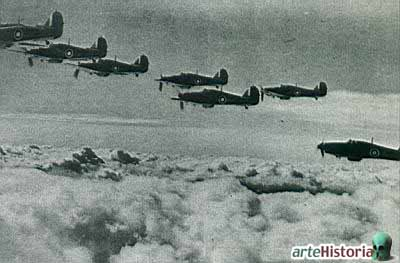
Date: July 1940 to May 1941 Fighters: England vs. Nazi Germany War: World War II Victory: English In the summer of 1940, just under a year after the start of World War II, only Britain resisted dominance Nazi in Western Europe. The battle of England, which ran from July to October of that year between the German and British air forces, was the first defeat of Hitler's Germany and saved Britain from the coming invasion. Although at first the fighting was favorable to the Luftwaffe, far superior in fighters, and whose bombers virtually destroyed all of the airfields and aircraft factories in England, the dire tactical decisions of both Hitler and especially Goering, motivated that finally the British will achieve victory.
TOP 10:
Vienna site
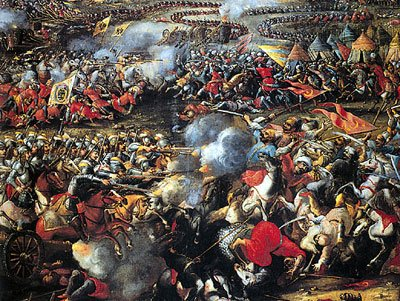
Date: September 27 - October 14, 1529 Fighters: Holy Roman Empire against Ottoman Empire War: Habsburg-Ottoman Wars Victoria: Holy Roman Empire The first siege of Vienna, in 1529, marked the height of the Ottoman invasion of central Europe by Turkish troops commanded by Sultan Süleiman I Kanuni. The misjudged territorial claims of Archduke Ferdinand of Austria (1503–1564, Emperor of the Holy Roman Empire under the name Ferdinand I since 1558), who had been elected King of Hungary after the death of his brother-in-law Louis II in the battle of Mohács in 1526, caused a Turkish invasion in the autumn of 1529. On September 27 of that year the Ottoman troops began the siege of Vienna, capital of the Austrian Archducation. The number of them is unknown, and estimates range from 90,000 to 120,000 men.
TOP 9:
Battle of Alesia
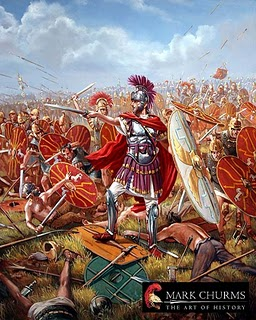
Date: September and October 52 BC Fighters: Roman Empire against Trbus of Gaul War: Gaul War Victoria: Roman Roman general Julius Caesar undertook the conquest of Gaul in the year 58 BC. At first everything was in his favor, until a Gallic leader, Vercingétorix, put himself in command of the Gala tribes, facing the Roman legions. The decisive battle took place, in the year 52 BC, in Alesia, a gala fortress located on top of a hill, to which Roman troops encircled. The right decisions and the magnificent strategy of Julio César led him to victory. Vercengétorix was taken prisoner and taken to Rome as a trophy, which motivated the unstoppable political rise of Julius Caesar.
TOP 8:
Battle of Constantinople
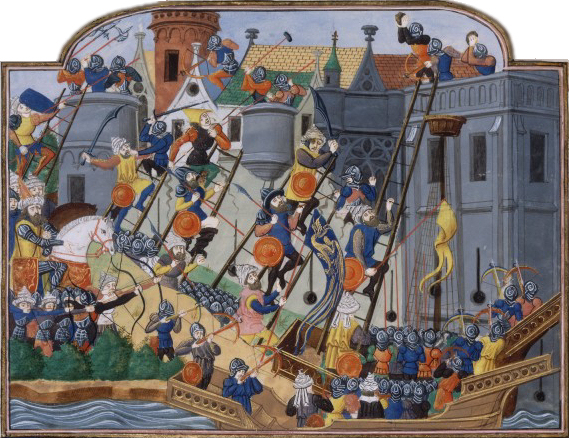
Date: April 7 - May 29, 1453 Fighters: Byzantine Empire vs. Ottoman Empire War: Ottoman Expansion in Europe Victory: Ottoman The fall of Constantinople at the hands of the Ottoman Turks on Tuesday, May 29, 1453 was a historic event that, in classical periodization and according to some historians, it marked the end of the Middle Ages in Europe and the end of the last vestige of the Eastern Roman Empire and classical culture.
TOP 7:
Battle of Moscow
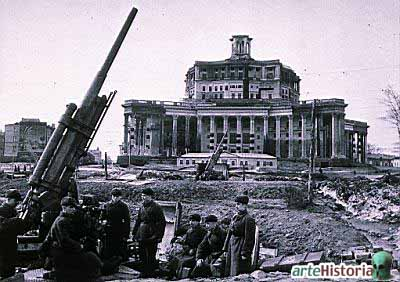
Date: October 2, 1941 - January 7, 1942 Fighters: Soviet Union against Nazi Germany War: Second World War Victory: Soviet The Battle of Moscow is the name given by Soviet historians to two strategically significant periods of struggle in a corridor 600 km from the western border of the Soviet Union during World War II. These episodes took place between October 1941 and January 1942. The Soviet defense thwarted Hitler's strategy that considered Moscow, capital of the Union of Soviet Socialist Republics (USSR) and its largest city, as the first military and political objective of the axis forces for the invasion of the Soviet Union.
TOP 6:
Battle of Cartagena de Indias
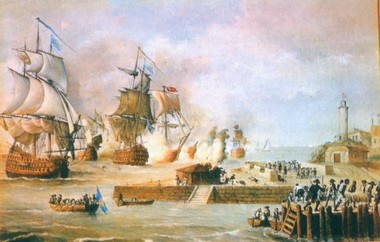
Date: March-May 1741 Fighters: Spanish Kingdom vs. United Kingdom War: Jenkins Ear War Victoria: Spanish The site or battle of Cartagena de Indias, from March 13 to May 20, 1741, was the decisive episode that It marked the outcome of the War of the Ear of Jenkins (1739–1748), one of the armed conflicts between Spain and Britain during the 18th century. This battle was the biggest defeat in English naval history, when a colossal fleet of 186 ships was defeated. The victory of the Spanish forces, under the command of the Lieutenant General of the Navy Blas de Lezo, extended the Spanish military supremacy in the western Atlantic until the 19th century.
TOP 5:
Battle of Poitiers: "Considered by historians as a battle more than decisive for the future of the European religion"
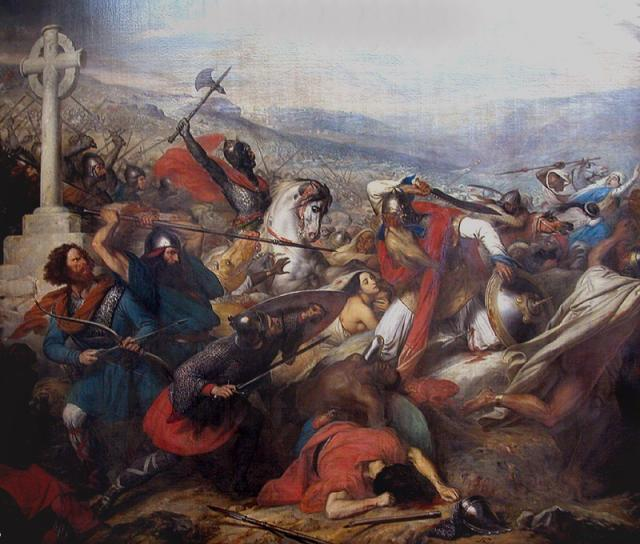
Date: October 10, 732 Fighters: Franco Kingdom against the Umayyad Empire War: Muslim invasions to Europe Victoria: Franca The Battle of Poitiers (known by European historiography as Battle of Tours not to be confused with the Battle of Poitiers of 1356) took place on October 10, 732 between the forces commanded by the Frankish leader Carlos Martel and an Islamic army under the orders of the valí (governor) of Al-Andalus Abderrahman ibn Abdullah Al Gafiki near the city of Tours, in present-day France. During the battle, the Franks defeated the Islamic army and Al Gafiki would be killed. This battle slowed Islamic expansion northward from the Iberian Peninsula and is considered by many historians to be an event of macro-historical importance, having prevented the invasion of Europe by Muslims and preserved Christianity as the dominant faith during a period in which the one that Islam was submitting the remains of the ancient Roman and Persian empires.
TOP 4:
Battle of Kurks
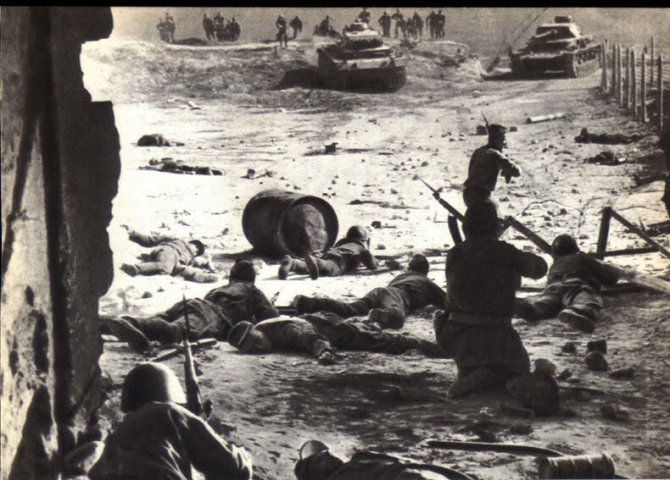
Date: July 4 - August 23, 1943 Fighters: Soviet Union against Nazi Germany War: World War II Victory: Soviet During the Second World War, the battle of the Kursk salient took place in July and August 1943, which he faced to the Soviet army against the German invaders. It was the biggest fight between tanks in all war history, in which, between the two sides, more than two million soldiers, six thousand tanks, thirty thousand pieces of artillery and five thousand aircraft intervened. In this battle the tactical capabilities of the great Russian strategists, such as Zhukov, Rokossovsky or Koniev, and Germans, such as Zeitzler, Von Manstein or Model, were shown. The battle of the Kursk was finally favorable to the Soviets, and marked the end of the German advance in Russian territory.
TOP 3:
Battle of Waterloo
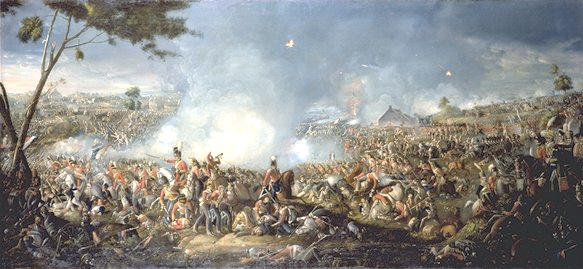
Date: July 18, 1815 Fighters: Great Britain and Prussia against First French Empire War: Napoleonic Wars Victory: English-Prussian It was the last battle fought by Napoleon. After 20 years of dominion over France and almost all of Europe, Bonaparte was taken into exile, but escaped. In June 1815, having regained power in France, Napoleon dared to challenge the coalition of European powers that faced him: England, Prussia, Russia, Austria and Hungary, as well as Spain and Portugal. In a very close fight, very close to the current Belgian population of Waterloo, the Napoleonic army, despite its veterany, and the good use of cavalry and artillery weapons, could not impose itself on the allied armies, led by the Duke of Wellington and Prince Blücher. The result of the battle of Waterloo conditioned the future of Europe for many years.
TOP 2:
Battle of Normandy: "Considered the most important battle of the Western Front, which includes the largest landing in history"
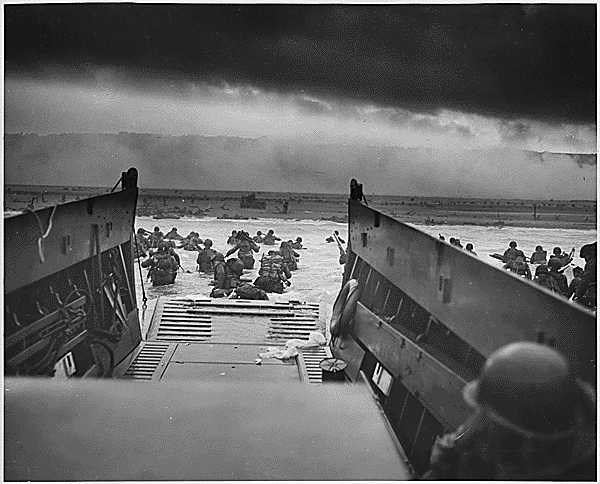
Date: June 6 - August 25, 1944 Fighters: United States, Free France, England and Canada against Nazi Germany War: Second World War Victory: Allied (United States, Free France, England and Canada) On this crucial day of the World War II (June 6, 1944), which was to be the largest landing of troops and war material in history, began on the Normandy coast. The objective of the Allied armies was to defeat Hitler's troops occupying France. A thousand warships, more than ten thousand airplanes, about three million soldiers, innumerable battle tanks participated in the operation ... Once they arrived at the coast, once they secured the beach heads and the inland roads, the Allied forces were gaining ground to the Germans, until at the end of August they managed to enter Paris victoriously. Films of that moment show the preparations, the execution and the outcome of the so-called Operation Overlord.
TOP 1:
Battle of Stalingrad: "Often considered the most important battle of World War II and one of the most important in history"
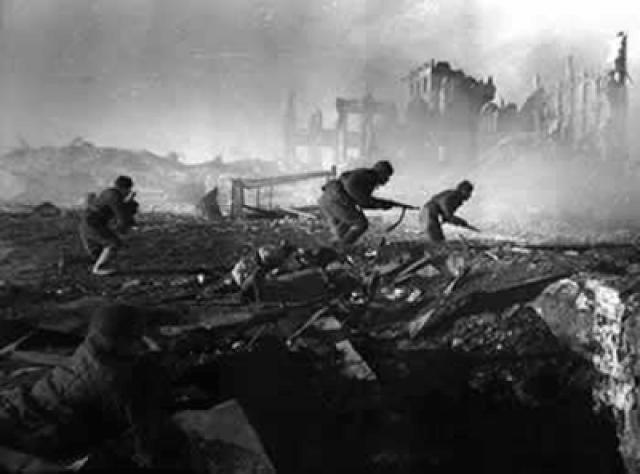
Date: July 17, 1942 - February 2, 1943 Fighters: Soviet Union against Nazi Germany, Italy, Romania, Hungary, Bulgaria, Finland and Croatia War: World War II Victory: Soviet The combat that took place in this Russian city, The current Volgograd, in the last months of 1942 and first of 1943, was one of the toughest in history. Turned into ruins because of the bombing, a quarterless battle between the attacking Germans and the Russians defending it developed between the rubble. He fought for each street, for each house, for each room, arriving on numerous occasions in close combat. The 250,000 Wermacht soldiers surrounded in Stalingrad stopped receiving supplies and a large number of them died of hunger or cold. As a last resort they only had surrender. The battle of Stalingrad would be the beginning of the end of Nazi rule over Eastern Europe.
More lists








